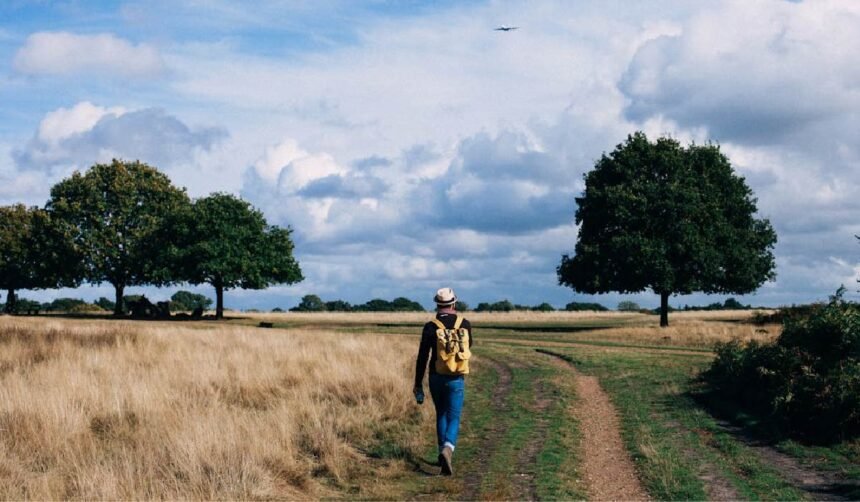You stand up, take a step, and your body runs a mini symphony. Feet cue ankles. Ankles cue knees. Hips join the chorus. If any section is off-key, you feel it. That’s why what’s on your feet can make you wobbly or wonderfully steady. We’re keeping it evidence-minded and practical—no fluff, just good stuff.
How Shoe Structure Influences Body Balance
Think of your footwear as a tiny platform. Its shape, stack, and stiffness guide how your foot meets the ground. A stable platform lowers unnecessary sway. Too soft, and you sink, then over-correct. Too rigid, and your body loses helpful feedback. Heel height also tweaks your center of mass. A big lift nudges you forward and makes small slips feel bigger. Midfoot width matters as well. Wider bases give you more lateral confidence during quick turns or awkward subway stops.
I learned this the hard way on a grocery-store floor polished to mirror status. My old trainers had marshmallow midsoles. One quick pivot near the frozen peas and poof—ice-skate mode! The lesson stuck: structure shapes stability.
The Role of Arch Support in Stability and Posture
Your arch works like a spring and a shock absorber. Some feet appreciate added support to control collapse. Others do better with minimal scaffolding to boost sensory input. Either way, the goal is alignment. Neutral alignment helps your ankles track, your knees stack, and your hips stay happy. Too much arch lift can lock the foot and reduce ground feel. Too little can make your tibia spin in ways your knees won’t love. Test different levels. Short walks tell the truth faster than spec sheets.
Why Outsole Grip Matters for Everyday Balance
Traction is your quiet bodyguard. The compound, tread depth, and pattern all determine friction on wet tiles, dusty sidewalks, or packed dirt. Grippy rubber reduces slip onset and the frantic arm-flail dance. Tread channels shed water and grit so you keep contact. Even small lugs can improve control on park paths and curb cuts. If you commute in rainy seasons or work on slick floors, prioritize rubber quality and surface-specific patterns. It doesn’t have to look aggressive; it only needs to hold.
Minimalist vs. Cushioned Shoes in Balance Training
This debate sounds louder than it needs to be. Minimal models amplify ground feel. Your feet read micro-changes in surface texture, which can enhance reflexes. Plush trainers absorb impact and may protect joints during higher loads, but they mute some sensory input. Neither camp owns the crown. Use each for the job it does best.
Curious about a low, flexible option for skill practice? Rutsu Barefoot’s low-top barefoot shoes place your foot close to the ground and let your toes splay. That wider toe box supports natural balance strategies, especially during single-leg tasks and slow drills. Rotate them in gradually to let your calves and intrinsic foot muscles adapt.
How Footwear Affects Muscle Activation and Joint Alignment
Your foot is packed with sensors. Thin, flexible platforms can wake them up. More feedback often means quicker stabilizing contractions in the ankle and hip. On the flip side, extra-soft foam can increase the time to steady after landing or stepping off a curb. Sidewalls, heel counters, and torsional stiffness also steer joint motion. If your ankles tend to roll outward, a supportive sidewall may reign that in. If your big toe struggles to move, a roomier forefoot can restore push-off mechanics and better posture above.
Picture a tripod: big toe, little toe, and heel. A model that lets those three points load evenly builds a reliable base. From there, muscles up the chain fire in sequence, not in panic.
Choosing the Right Shoes to Improve Your Balance
One pick rarely fits every foot or day. Match features to your needs, your surfaces, and your training plan:
- Pick a platform height that doesn’t tilt you forward during long standing.
- Choose a width that lets toes spread without slop.
- Favor rubber compounds and tread suited to your main surfaces.
- For practice days, try flexible pairs that boost ground feel.
- For longer runs or heavy days, keep a cushioned option in rotation.
A quick at-home test helps: stand on one leg for 20 seconds. Try different pairs. Notice sway, calf tension, and toe engagement. The pair that makes you feel calm, tall, and steady wins.
Conclusion: Better Balance Starts with Smart Shoe Choices
Feet crave both freedom and guidance. Give them a sensible structure for daily life and an honest ground feel for practice. Mix models across the week so tissues adapt and skills grow. A small footwear tweak can ripple up the body in the best way.
FAQs
How do I know if my footwear is too soft for stability work?
If you feel delayed reactions after planting your foot—like your ankle “catches up” late—the platform may be overly plush for drills. Try a firmer pair for single-leg tasks and keep the softer one for longer, easier miles.
Are zero-drop models helpful for posture?
They can be. By keeping the heel and forefoot level, they encourage a more natural stance for many people. But sudden changes can stress calves and Achilles. Transition slowly and monitor how your lower legs feel over 2–4 weeks.
What toe box shape supports better balance?
A wider, foot-shaped forefoot lets your toes spread and grip the ground. That creates a stronger tripod and cleaner alignment at the ankle and knee. Look for a generous width that doesn’t pinch during mid-day swelling.
Can better traction really reduce fall risk at home?
Yes. On smooth tile or hardwood, a good rubber compound and thoughtful tread reduce slip onset. Combine that with simple habits (wipe wet floors, keep walkways clear) and your daily stability improves.
How should I rotate minimalist and cushioned pairs?
Use minimal for short technique sessions and balance drills. Use cushioned pairs for longer efforts or recovery days. Start with one to two minimal sessions per week, then progress if your calves and arches feel fine.














